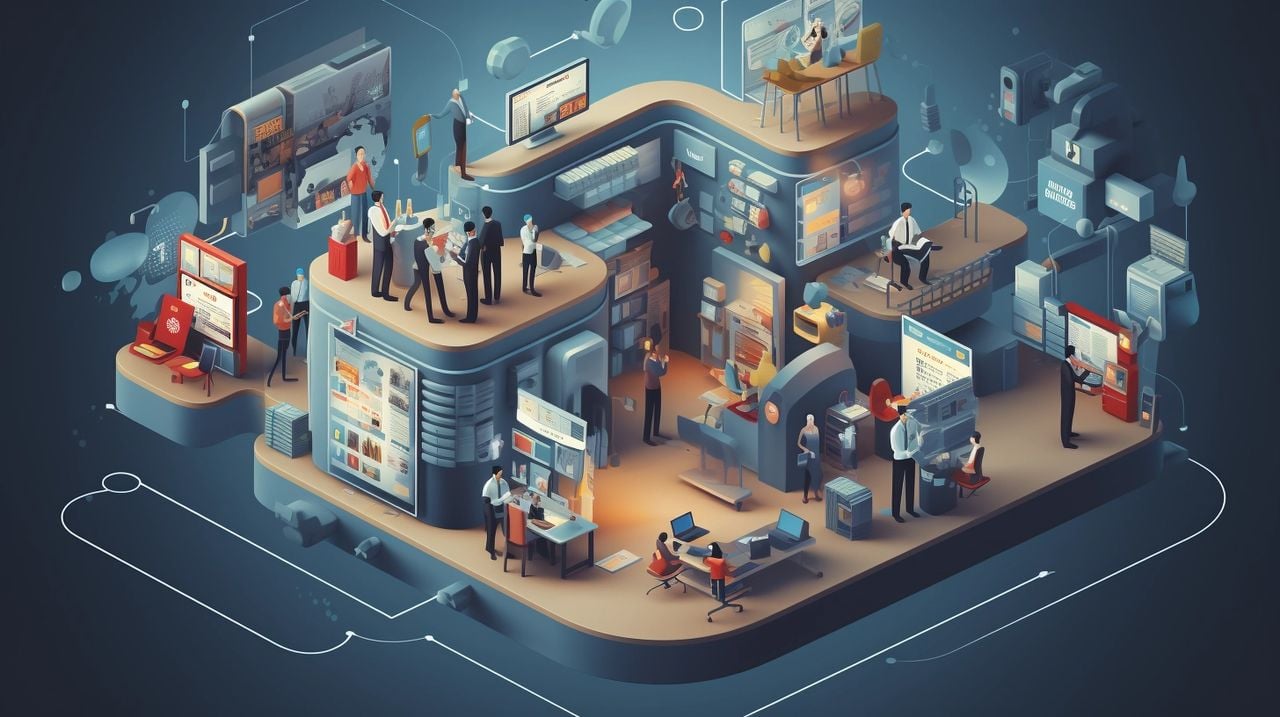
With so many free AI tools now available it’s hard to actually pinpoint the best to use to help improve your productivity, creativity and automation workflows. Thankfully Matt Wolfe the owner of Future Tools has created a definitive list of over 25 free to use AI tools that can help you in a wide variety of different areas of your life or business. Check out the video below to learn more about each one in depth or jump over to the Future Tools website to see a more extensive list of the current free AI tools available online and is applications for your mobile device.
Whether you’re a professional looking to streamline your workflow or an enthusiast eager to explore new creative avenues, there’s a wealth of free AI tools available to help you achieve your goals. These tools cover a variety of applications, including creative writing, image enhancement, and 3D animation. For those seeking to harness the power of AI, Future Tools is an invaluable online resource that provides a curated list of the top free AI tools to boost your productivity and unleash your creativity.
Chatbots are at the cutting edge of AI technology, revolutionizing the way we interact with machines. User-friendly tools such as ChatGPT, Google Bard, and Claude from Anthropic are readily accessible and can perform a range of tasks, from providing advice to summarizing lengthy documents. These chatbots are not just functional; they’re designed to be easy to use, making them indispensable for anyone in need of efficient support.
For those looking for a touch of entertainment, the Character AI chatbot stands out by allowing engaging conversations with fictional characters, adding a dash of fun to your daily routine. This innovative use of AI showcases the versatility of chatbots, extending their use beyond traditional customer service roles. AI has also found its way into browser extensions. The Perplexity AI Chrome extension, for instance, can quickly locate and summarize information on web pages, enhancing your browsing experience with the power of AI.
Free AI tools
Here are some other articles you may find of interest on the subject of AI tools and services available to improve your productivity :
Creative writers who encounter writer’s block can find solace in AI. Text Effects, a joint effort between Google and Lupe Fiasco, is designed to ignite your imagination and assist you in crafting captivating narratives. Marketers aiming to harness the potential of AI can benefit from the HubSpot Academy’s free course on AI in marketing. This course provides insights into the ethical and effective use of AI tools, ensuring you stay ahead in the competitive marketing landscape.
In the realm of visuals, AI-driven image generation tools like Leonardo AI and DALL-E 3 boast impressive capabilities. Leonardo AI offers a real-time canvas to bring your ideas to life, while features like Magic Eraser and Upscale make image editing a breeze. The 3D animation industry has also welcomed AI with open arms. Platforms such as Blockade Labs and Luma Labs make it easier to create 3D environments and objects from simple text prompts, simplifying what were once complex tasks.
Video production has become more user-friendly with AI tools like Pika and Plasma Punk, which provide AI-powered video generation features. Additionally, Playphrase.me, a video clip search engine, enables you to find specific clips using text searches. AI’s capabilities extend to the audio domain as well, with tools like Adobe Speech Enhancer for audio cleanup and Mubert and Voicemod for AI-generated music. Meta’s AudioBox even creates sound effects, showcasing the broad range of AI’s audio applications.
- ChatGPT
- ChatGPT is an advanced conversational AI developed by OpenAI. It’s designed to engage in natural, human-like text conversations, capable of answering questions, providing explanations, and even simulating creative writing. Learn more at ChatGPT.
- Bard AI Chat
- Bard AI Chat is Google’s foray into conversational AI, offering users the ability to interact with an AI in a chat format. It’s designed to provide information and answer queries leveraging Google’s vast data resources. Visit Bard AI Chat for more details.
- Claude AI Chat
- Claude AI Chat is an AI-driven chat platform designed to engage users in meaningful conversations. It uses advanced natural language processing to understand and respond to user queries effectively. More information is available at Claude AI Chat.
- Character AI
- Character AI focuses on creating AI personas that users can interact with. These AI characters are designed to exhibit unique personalities and behaviors, offering a novel interactive experience. Find out more at Character AI.
- Perplexity AI Companion
- Perplexity AI Companion is a Chrome extension that assists users by answering questions and providing information directly in the browser. It’s an AI tool designed for quick, efficient information retrieval. More details can be found at Perplexity AI Companion.
- TextFX
- TextFX, offered by Google, is an innovative tool that transforms text into various creative formats. It’s designed to assist in creative writing and text manipulation. Learn more at TextFX.
- AI For Marketers
- AI For Marketers is a specialized tool tailored for marketing professionals. It leverages AI to enhance marketing strategies, content creation, and consumer engagement. Visit AI For Marketers for additional information.
- Leonardo.Ai
- Leonardo.Ai is an AI platform that offers a range of tools for data analysis, machine learning model building, and more. It’s designed for both beginners and experts in the field of AI. More details are at Leonardo.Ai.
- Microsoft Image Creator
- Microsoft Image Creator is an AI-powered tool that generates images based on textual descriptions. It’s integrated into the Bing search engine, allowing users to create custom images easily. Learn more at Microsoft Image Creator.
- Ideogram
- Ideogram is an AI tool that provides trending topics and ideas. It’s particularly useful for content creators looking for inspiration and trends in various fields. Visit Ideogram for more information.
- AI Playground
- AI Playground is a platform where users can experiment with different AI models. It’s an educational and experimental space for those interested in learning about AI capabilities. More details can be found at AI Playground.
- Magic Eraser
- Magic Eraser is an AI tool that allows users to remove unwanted elements from images. It uses advanced algorithms to seamlessly erase objects while maintaining the integrity of the photo. Visit Magic Eraser for more information.
- AI Image Upscaler
- AI Image Upscaler enhances the resolution of images using AI. It’s particularly useful for improving the quality of low-resolution images without losing detail. Learn more at AI Image Upscaler.
- LeiaPix
- LeiaPix converts standard images into 3D animations. It’s an innovative tool for creating engaging visual content with a unique three-dimensional effect. More details are available at LeiaPix.
- AI Tool Finder
- AI Tool Finder is a comprehensive platform that curates various AI tools available in the market. It helps users find the right AI solution for their specific needs, ranging from chatbots to image processing tools. More information can be found at AI Tool Finder.
- AutoDraw
- AutoDraw is a Google AI experiment that turns rough sketches into polished drawings. It’s a user-friendly tool that helps non-artists create professional-looking illustrations. Visit AutoDraw for more information.
- Blockade Labs
- Blockade Labs offers AI solutions for enhancing satellite imagery. It’s designed for users who need high-quality, detailed images from satellite data. More information can be found at Blockade Labs.
- Luma AI
- Luma AI is an advanced AI tool for video analysis and enhancement. It provides features like object recognition and tracking, making it useful for various video editing and production tasks. Learn more at Luma AI.
- Luma Genie
- Luma Genie is an extension of Luma AI, focusing on automating video editing tasks using AI. It’s designed to simplify the video production process, making it accessible to a wider audience. Visit Luma Genie for more details.
- Pika
- Pika is an AI-driven platform for creating digital art. It offers tools for both novice and experienced artists to explore digital creativity with ease. More information can be found at Pika.
- Plazmapunk
- Plazmapunk is an AI tool for music creation. It allows users to experiment with different sounds and compositions, leveraging AI to enhance the music-making process. Learn more at Plazmapunk.
- PlayPhrase.me
- PlayPhrase.me is an AI tool that helps users learn languages through phrases and sentences. It’s a practical tool for language learners looking to improve their skills through contextual learning. Visit PlayPhrase.me for more information.
- Adobe Speech Enhancer
- Adobe Speech Enhancer is a tool designed to improve the clarity and quality of speech in audio recordings. It’s particularly useful for podcasters and audio professionals. More details can be found at Adobe Speech Enhancer.
- Mubert
- Mubert is an AI-powered music platform that generates personalized music streams. It’s designed for users who want a unique, constantly evolving listening experience. Learn more at Mubert.
- Text to Song
- Text to Song is an innovative tool that converts text into song lyrics, using AI to generate music. It’s a fun and creative way to explore music composition. Visit Text to Song for more information.
- Suno AI
- Suno AI is a tool that provides AI-generated news summaries. It’s designed for those who want quick, concise updates on current events, leveraging AI to filter and summarize news effectively. Discover more at Suno AI.
- Vocal Remover
- Vocal Remover is an AI tool designed for isolating or removing vocals from music tracks. It’s useful for musicians and producers looking to create karaoke tracks or sample music without vocals. More information is available at Vocal Remover.
- Audiobox
- Audiobox is an AI-powered tool that assists in audio editing and production. It offers features like noise reduction, audio enhancement, and more, making it suitable for podcasters and audio professionals. Learn more at Audiobox.
- Pinokio
- Pinokio is an AI tool that focuses on interactive digital experiences. It blends AI with creative design to create engaging, responsive digital environments. More details can be found at Pinokio.
The array of free AI tools at your disposal is truly impressive, covering everything from chatbots to video editing. By exploring these tools, you can take your projects to new heights and discover fresh creative possibilities. Find the AI tools that best fit your needs at Future Tools and join the ongoing digital evolution.
Filed Under: Guides, Top News
Latest timeswonderful Deals
Disclosure: Some of our articles include affiliate links. If you buy something through one of these links, timeswonderful may earn an affiliate commission. Learn about our Disclosure Policy.










